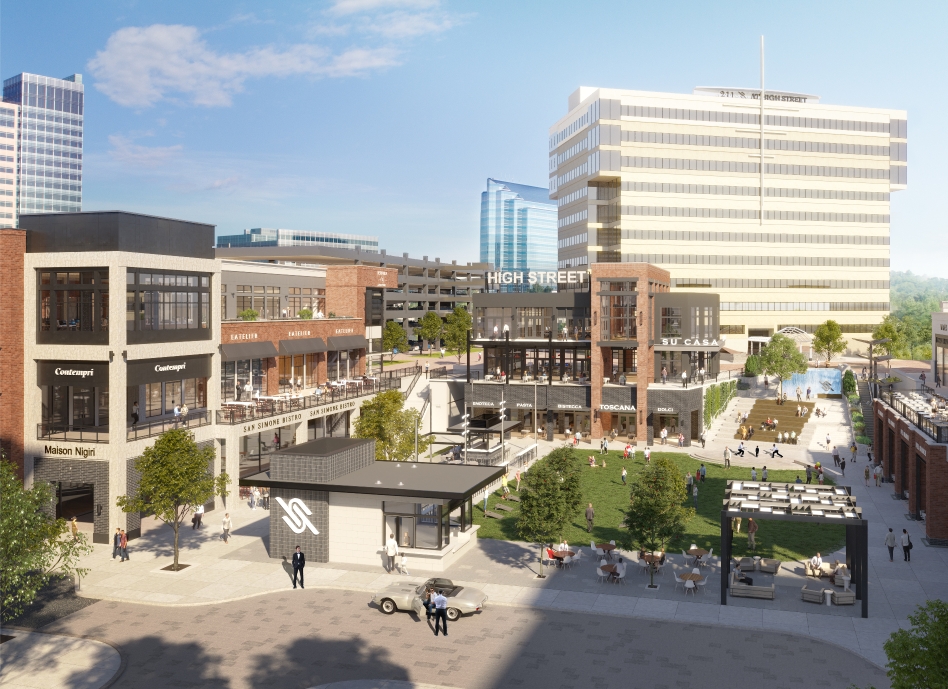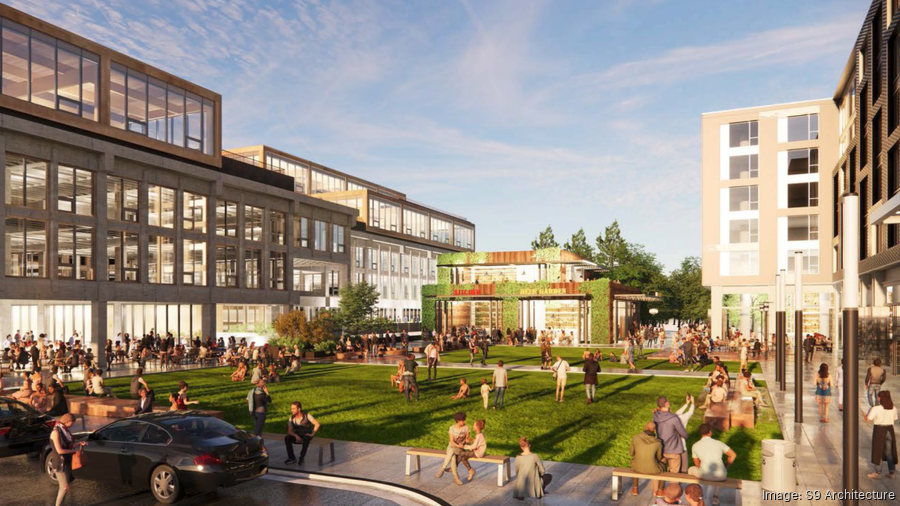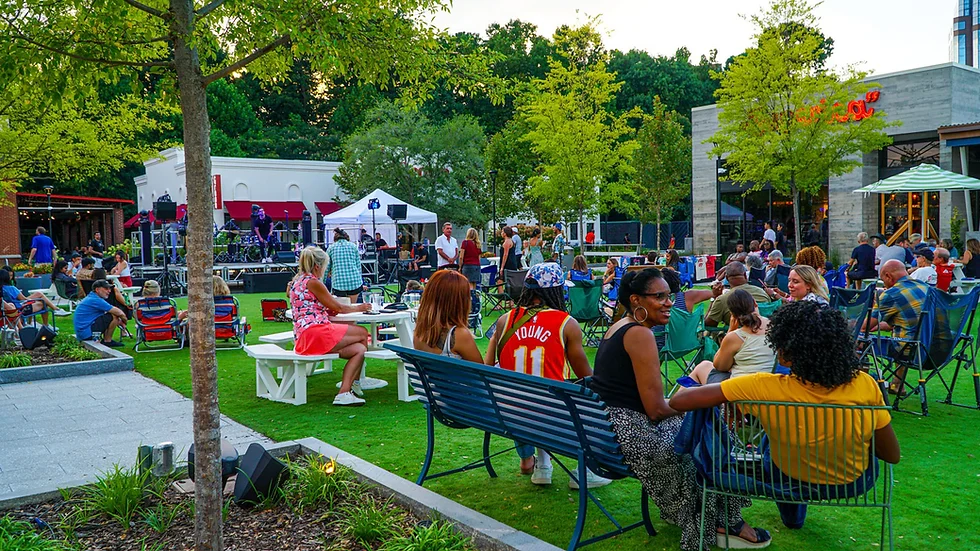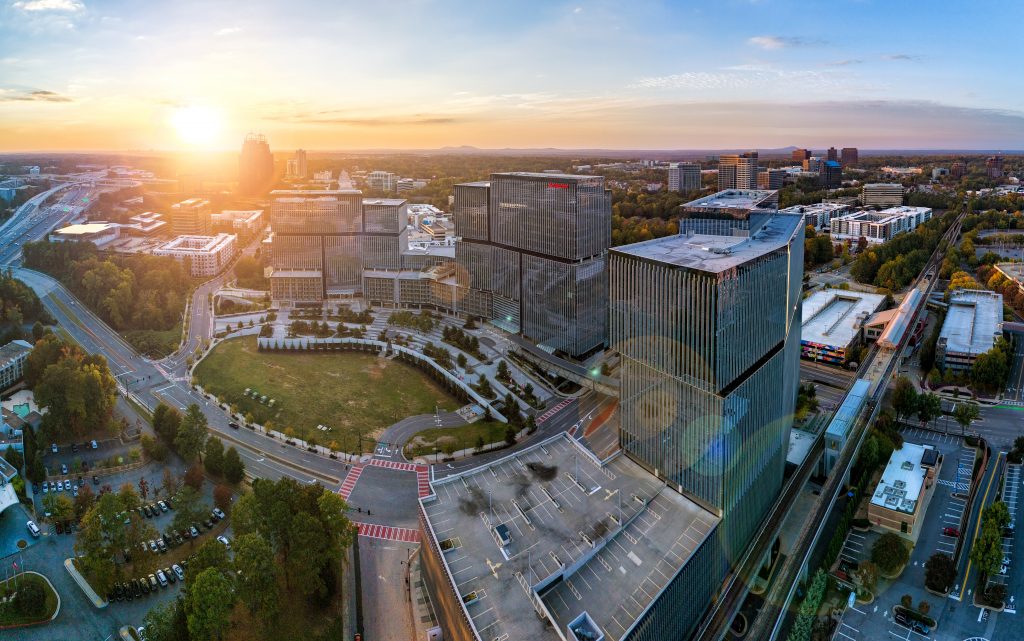
Dunwoody’s Developing the Modern Suburb in Perimeter
It’s time to retrofit, re-green, and re-size Atlanta’s suburbs. That’s what Ellen Dunham-Jones, author of “Retrofitting Suburbia”, told Perimeter business leaders at the Edge City 2.0 seminar, hosted by the City of Dunwoody, Dunwoody Development Authority, and Perimeter Chamber. These seminars cover the results from the City of Dunwoody’s Edge City 2.0 study, completed in 2023 in partnership with Perimeter Community Improvement Districts (Perimeter CIDs) as a visionary blueprint for Dunwoody’s commercial core district in Perimeter.
Dunham-Jones shared suburb revitalization stories from around the nation, proving that what draws people—and business—is human connection. Today’s workforce is flocking to dense, walkable areas, where buildings don’t reach too high, and public green spaces bring nature to you.
Perimeter is already modernizing—just look at the new, denser Ashford Lane development and the recently re-greened Park Place lawn. As Dunwoody Mayor Lynn Deutsch knows, “Edge City is well underway.”
What’s an Edge City?
Edge cities are simultaneously urban and rural: since 1991, the term is used to describe areas with large amounts of leasable space, more jobs than bedrooms, and that have changed drastically in the last 30 years. Perimeter is the picture-perfect example of a “boomburb”, a previously suburban area that’s rapidly built up around the I-285/400 interchange.
An edge city is a place that’s already undergoing rapid transition. With their Edge City 2.0 study, Dunwoody and the PCIDs are ensuring the new Perimeter will be built to last as a work-play-live destination.

Building on a human scale
Modern customers are moving toward dense, walkable areas. With teleworking and online retail going strong, what people look for outside has changed: public green spaces, relaxing hangouts, and local amenities are in high demand.
Dunham-Jones shared examples, like the former IBM campus in Austin, Texas, of large office campuses re-developing for the better. The city of Austin and private developers broke up long blocks with pedestrian paths, reduced building height, and added walkable retail—to great success. The pairing of Austin’s zoning changes and businesses’ infrastructure improvements brought shoppers and residents in short order, changing a disused district into Austin’s “second downtown”.

In Perimeter, employers see the same trends. Campus 244 and Terraces landed leasers because of their access to transit and hangout spots for their employees. At Transportation Insight’s move-in day, “employees told me how excited they are to walk out of their offices and right to all the amenities in the area,” reported Mayor Deutsch.
There’s more to do still: Dunham-Jones recommended continuing the paths and trails network in Perimeter to bring more areas within walking distance. Other updates like liner retail, a smaller strip of shops placed in front of imposing office buildings, can help pedestrians relax and entertain themselves on a previously unused street.
Rolling out the green carpet
“Adding green spaces and third spaces–places where people can stay other than work or their home–creates community connections, which moves money around,” said Dunham Jones.

Re-greening Perimeter will encourage more workers and residents to hang out in their neighborhood, increasing sales for dining and shopping establishments. Dunwoody is already getting greener with the city’s Two Bridges Park opened in 2022, plus privately owned areas like Ashford Lane and Park Place’s new lane. More public and private developments are leaving room for nature to better attract visitors.
Adding tree coverage and landscaping also helps an area’s longevity: Dunham-Jones highlighted how nature can protect sidewalks and structures from extreme temperatures and worsening storms. Breaking up heat islands of concrete parking lots and sidewalks with natural spaces allows people to walk in hot summers, and more absorbent dirt and plant area helps against flooding from heavy rain.

Why it’s worth the work
Retrofitting isn’t an easy task. Though it’s a long project, revitalizing these suburbs is the only way to survive the retail closures and downturn in suburban income of the last few years.
As Dunham-Jones pointed out, “walkable urbanism targets a young working population, which brings in a different market in the long term: their parents, who often move to be closer to their children.” Perimeter can surpass its current population growth by staying the course toward a modern Edge City.
By retrofitting these suburban areas, Perimeter will benefit from what drew people to them in the first place: great schools, lots of offices, and quality housing; while revitalizing the community around them.
Stay updated on what’s new in and around Perimeter and how to get there. Subscribe for emails and follow Perimeter ATL on Facebook, Instagram, and LinkedIn.



